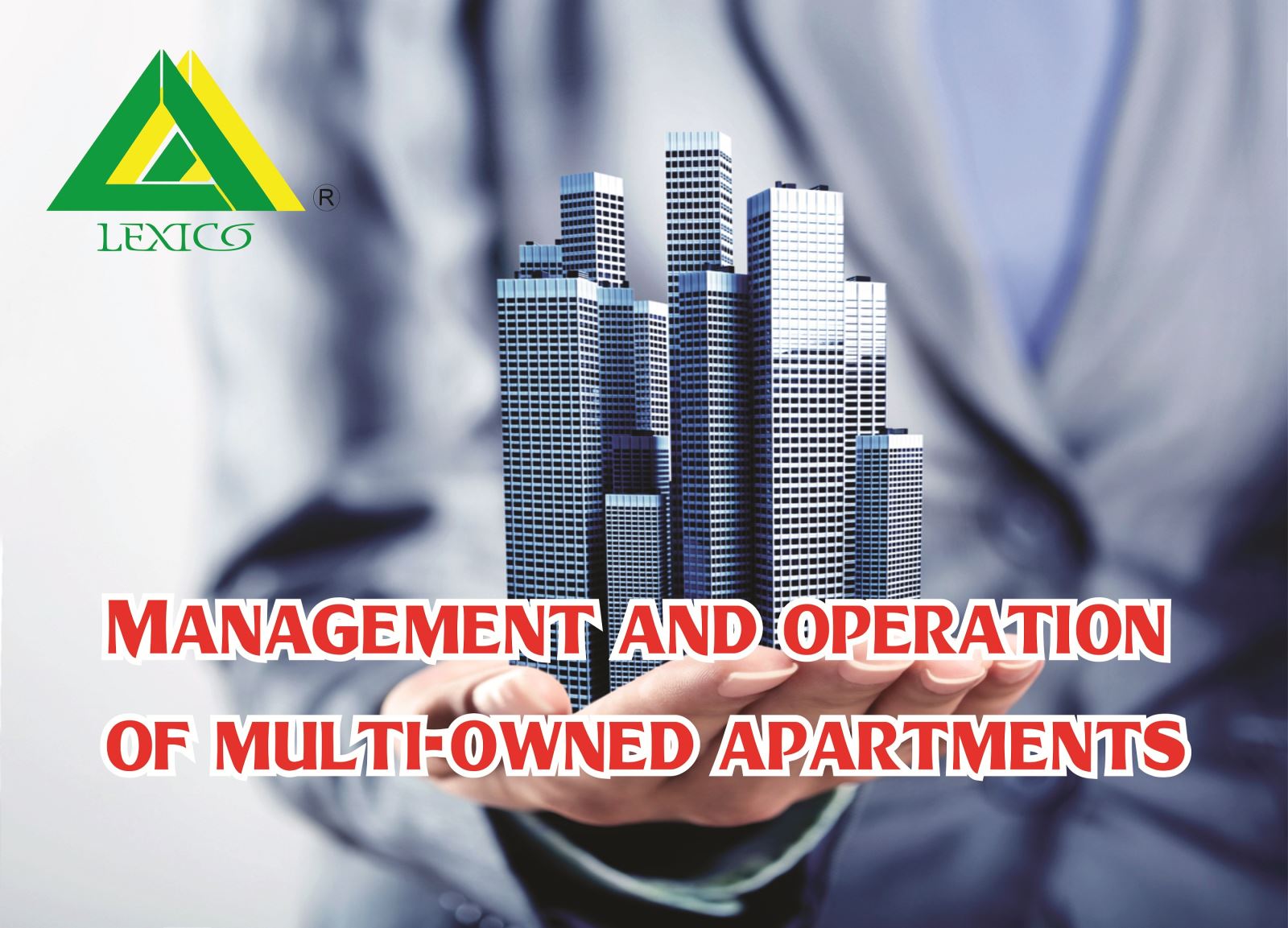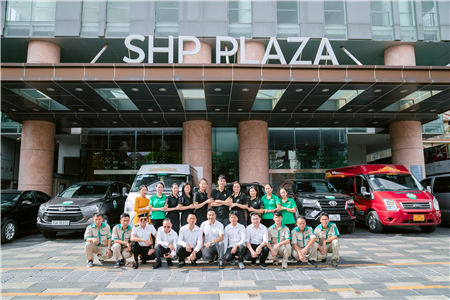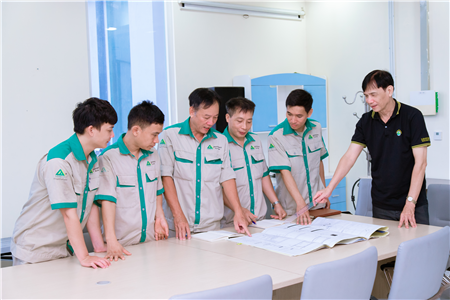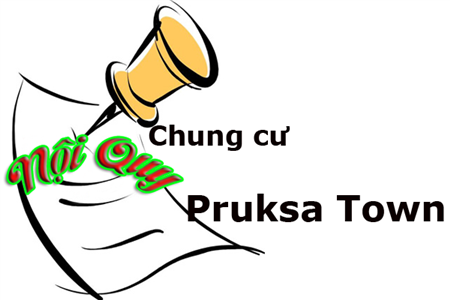Multi-owned multi-storey apartment buildings are being built more and more in cities in our country. These condominiums require specific management mechanisms to ensure sustainable development. Over the years, many shortcomings have been revealed in the management of these apartments. Therefore, research to improve the quality of condominium operation and management services has always been of interest to researchers and housing state management agencies. The content of this article focuses on clarifying specifics in the management of multi-owned apartment buildings; assess the current state of the condominium operation management in our country; researching the experiences of some countries in managing this type of housing and proposing solutions to improve the quality of apartment management services in urban Vietnam.

1. The management and operation of multi-owned high-rise apartment buildings
Urbanization has led to high population densities, while limited built-up land in urban areas has led to the development of condominium models in many US cities and Asia such as Chicago, New York, Hong Kong, Singapore, Shanghai and Taipei (Yeh and Yuen, 2011). In major cities, more and more residents live in high-rise apartment buildings with many apartments forming multi-apartment apartment buildings (MOH). In recent decades, Vietnam has also been developing housing in this direction.
Vietnam is a densely populated country, especially with a very high population density in urban areas. By 2020, 34.4% of the total population of Vietnam will live in urban areas. Population density in big cities like Hanoi is up to 9,343 people / km2. Preliminary statistics up to now, the country has about 5,000 apartment buildings; in which concentrated mainly in Hanoi and Ho Chi Minh City. According to the housing situation survey, Hanoi is the locality with the highest proportion of condominiums with 16.64%. Ho Chi Minh City ranked second, with the proportion of apartments accounting for 6.13%; Hai Phong and Da Nang respectively ranked next with 5.8% and 2.1% respectively (Report on Urban Housing Statistics of the Ministry of Construction, 2019). Furthermore, out of all housing types, only condominiums showed continued growth. In Hanoi, condominiums account for 87.3% of the total new housing supply (Report on Urban Housing Statistics of the Ministry of Construction, 2019). Hai Phong is implementing a new construction plan of over 7,100 apartments, renovating all 178 old apartments (Hai Phong Department of Construction, 2019). It is forecasted that by 2030 there will be 2.4-2.5 million people living in apartments out of the 10 million people in Hanoi City (Report of Hanoi Department of Construction, 2018). From the above statistics, it can be concluded that condominiums are a very important type of housing in urban areas such as Hanoi and Hai Phong in the coming years.
New condominiums have been booming since the 2000s. In the 2000s, the first professional condominium operation management service company was established, especially maintenance services. Over the years, there has been a sharp increase in condominium construction. Consequently, condominium management organizations face the problem of increasing the number of disputes between residents as well as security issues. These problems are caused by the lack of regulation and the confusion of law in condominium management. To cope with this situation, the Ministry of Construction issued Circular No. 02/2016 / TT-BXD on regulations on management and use of condominiums in 2016. The provisions of this circular play a role. is the legal foundation for condominium management in Vietnam.
According to the Hanoi Department of Construction, up to now, 13.5% of the population of Hanoi are living in apartments. The city has nearly 2,600 apartments, accounting for 58% of the number of apartments in the country, of which nearly 1,580 old apartments, 845 commercial apartments and 174 resettlement apartments. n the past, disputes between investors and residents have occurred in 86 apartments, affecting social security and order. The conflict is mainly the handing over, management and use of the maintenance fund, some investors deliberately "embracing the fund" without handing over to the building management board, affecting the interests of residents ... In some places, and businesses providing condominium management services take advantage of all the vacant areas for rent, even shrinking the public area of residents to use for other purposes. As a result, the service fee increased, the living environment was affected, and the tight public space caused frustration among people, leading to conflicts. The situation of protests and disputes is increasingly common and the danger is spreading throughout the apartments. This has a significant impact on the daily life of the people living in the apartment building.
Another fact shows that many high-rise apartment buildings that are only a decade old have been degraded and outdated. Lack of proper management, especially maintenance activities, is often one of the main causes of such rapid degradation of apartment buildings.

2. Management characteristics of multi-owned condominiums
Different apartment blocks often have different forms of ownership. Ownership structure among high-rise apartment owners is very diverse. In addition to the apartments sold to residents, investors often still hold ownership of certain areas in the apartment building, including the area for lease for commercial and business purposes. Some apartments that investors keep for commercial business leasing are up to 40% (the area of apartments sold to residents only accounts for 60% of the apartment area). In different countries, the form of multi-ownership in apartment complexes is also different. For example, apartments in Hong Kong are organized under the co-ownership system while apartments in Singapore are organized under a stratified ownership system (Hastings et al., 2006). However, multi-owner apartment buildings have one thing in common that some elements or physical parts of the apartment building are jointly owned by all owners (co-owners) and divided. sharing rights for all apartment owners. For common physical elements or parts, all apartment owners in the apartment building must have a shared responsibility for the management and operation of the apartment building. In high-rise MOHs, these common elements include building services such as water pumps, sewer pipes, lifts, and common areas such as stairs, entrance corridors, and community homes. . In addition to using and operating these tangible elements, the management of multi-owned buildings MOH also takes into account various aspects such as security, tranquility and environmental sanitation. Due to the complexity of installed building services, large area of community area and large number of residents, managing a MOH high-rise project often requires a lot of manpower and skills. expertise (Chen and Webster, 2005; Hui, 2005). Research by Yip and Forrest (2002) has shown an intrinsic conflict that encompasses the intersection of individual and collective ownership of apartments and its undesirable impact on participation. management of the owner / resident has made the management of apartment buildings more complicated. Obviously, self-management of apartment buildings is often not an easy task for apartment owners. Furthermore, the time constraints of apartment owners may impair the ability to self-manage MOH multi-owned apartments (Leung, 2005).
Therefore, condominium operation and management services are an important type of activity in the housing construction and trading sector. During the use of apartment buildings, there should be a management organization responsible for providing services to residents living in the apartment building and ensuring the operation of the apartment building. The condominium management organization has the role of managing the operations of the facilities and services of high-rise apartment buildings, such as the maintenance department to ensure the continuous operation of equipment and services. service. Condominium management can assist the housing businesses in attracting customers, maximize return on investment, and can build a long-term competitive advantage in the market.
Over the years, researchers and home business executives have come up with many definitions describing the goals and scope of condominium management practices. However, the definition and scope of condominium management as well as the organizational model of condominium management remain a controversial topic and “the definitions depend on the local culture, group interests. the dignity and personal interests of the people ”(Lindholm 2005). In recent years, scholars as well as administrators have come up with many definitions describing the purpose and scope of management of high-rise apartment buildings (Booty 2009), for example, the definition of "Management Condominium management is "the integration of processes within an organization to maintain and develop agreed-upon services that support and improve the efficiency of its main operations." An apartment building involves a variety of activities aimed at efficiently managing physical assets and providing efficient services.
The goal of the infrastructure management of apartment buildings is not only to optimize the operating costs of buildings, but also to increase the efficiency of the management of space and related assets for people and steps. The condominium business needs to develop suitable condominium management models in order to promote the potential of all services of the building to satisfy residents - those who have purchased an apartment building, thereby supporting support key business activities that generate profits for businesses. Mudrak et al. (2005) have pointed out that in recent years, condominium service management organizations have only been innovating at a low level and that the demand for innovation in this industry is increasing due to the nature of the product. The days of condominium operations and residents' needs and desires change rapidly. Condominium service management includes many activities in many different fields combining new resources to ensure success in maintaining effective operation of apartment buildings, especially complex apartments. Hui et al (2013) argued that condominium service management must focus on satisfying residents' satisfaction and be able to provide high quality service and efficient activities to enhance satisfaction. of residents. Organizations that provide condominium operations management services must perform a variety of tasks, including maintenance, security, logistics, technical infrastructure, workplace, ICT, cleaning and management. waste,… (Deyan 2015).
3. Management situation of multi-owned condominiums in major cities in Vietnam
Managing, using and operating a high-rise apartment building in the hot development context like Vietnam is a very sensitive and complex field. In fact, the model of multi-ownership condominium in our country is very diverse, but the legal basis for proving and clearly defining common ownership, private ownership and common use right is not clear. Clause 2, Article 103 of the Law on Housing 2014 stipulates that: for an apartment building with 20 or more apartments, it is required to establish a condominium management board. The management board is elected by the owners, has great responsibilities and powers such as signing service contracts on behalf of the people, maintaining, collecting and managing operating costs, being handed over and managing accounts. maintenance costs, .. But the management board has no legal status, so it is not competent to solve problems arising in the operation, so in fact, no project investor has applied the regulations. this plan.
The Law on Housing in our country also stipulates that: The condominium operation and management unit must be an organization or enterprise with functions and capabilities in accordance with the law on real estate management / operation. In fact, many apartments have not yet established a management board. Some condominiums have established management boards but are underperforming. Particularly, the Board of Directors was created with the purpose of protecting the interests and serving the common needs of residents, but in reality in many apartments, the behavior of the Board of Directors makes people miserable. At the seminar "Who protects the rights of residents in the apartment?" March 12, 2021 showed that there was “The building's management board did not announce the operating regulations, the monthly financial income and expenditure reports, the use of the operation management fund contributed by the residents for wrong purposes. and during the past 2 years, also did not hold the annual apartment building meeting ".
The fact also shows that many condominium developers have incorrectly predicted or did not care about building a common area to meet the needs of residents, while local management agencies have not instructed and supervised. strict, leading to lack of parking space, means of transport, arbitrary parking on playgrounds, sidewalks, ... arose conflicts and disputes.
The results of interviews with residents living in some condominiums showed that their satisfaction with the management and operation services of the apartment building is low. Residents evaluate the openness and financial transparency in the use of the maintenance fund of the apartment is not high, the apartment management board has not really listened to and understood residents' wishes, fully satisfying the benefits. deserving that residents enjoy. Some residents complained about the quality of some services, such as poor use of utilities, and lack of space for community activities. Some apartment management boards often delay in handling problems and questions of residents, do not tell residents exactly when the management board will completely solve that problem. When equipment is damaged: water pipes, electric bulbs burn, lift damage, the management department does not handle it quickly and promptly, leading to a situation affecting residents' daily life.
Not everyone can participate in the monthly residential group meetings, so those meetings are often not the majority opinion, but it is just the opinion of a small part, leading to the management board not fully grasping. the wishes and needs of the population. In some apartment complexes, there are still conflicts between the apartment management board and residents, between residents and the management board, and the management board has not really represented the interests of the people, leading to the situation. There are conflicts, must change the apartment management board many times.
The quality of service provided by the condominium operation management units is still low, including poor service quality indicators. The service delivery process is not reasonable, time consuming and difficult to implement. The professionalism of the staff, the skill of the staff in the management and operation of the condominium services are low, leading to the unsatisfactory service quality. These conflicting issues in some apartments are increasingly fierce between residents and investors and with the building management as well as professional management units, many protracted conflicts have not been resolved. . The weaknesses in the management of condominiums have been and are significantly affecting the modern condominium development model in our cities.
Among the reasons that lead to the low quality of condominium operation and management services are the organizational management capacity of the apartment management board, the capacity and service attitude of the staff. The training on professional knowledge and skills of the apartment management boards is inadequate, leading to the fact that some members of the management board are still not able to understand and answer questions of residents in an easy to understand, quick and thorough way. The members of the management board push responsibilities to each other, the problem of assigning work is not really clear.

4. Experience in managing multi-owned condominiums in several Asian cities
According to Mari (2014), current knowledge and understanding about condominium quality management quality assessment is still an area that has not been studied much. Condominium service management is an internationally recognized type of business service that is popular among real estate organizations in advanced countries such as the UK and the US ( Mudrak et al., 2004). The growth of condominium management services is due to the global adoption of outsourcing services in both the public and private sectors (Roberts 2001).
The Taiwan Condominium Act stipulates that every condominium must have a management organization. Before operating, the regulatory organization must register with the government to get approval. The management company established after obtaining approval from the owners is responsible for the management of the apartment building. The government forced condominiums built after 1995 to establish governing organizations.
The method of hiring a professional condominium management company to provide condominium operation management services has been supported by many governments, professional agencies and scholars to prevent multi-owned apartments from being operated. good practice (Chan, 2006; Loo, 1991; Ho et al., 2006; Ho and Liusman, 2016). A professional management company - a third party, commonly known as an asset management agent (PMA), is often engaged to perform various tasks in apartment management such as cleaning, security, etc. repair, maintenance and financial management. The outsourced management approach was adopted in the UK in the 1970s, and outsourcing is believed to be an initiative to reduce the operating costs of condominiums (Noor and Pitt, 2009).
In Hong Kong, professional condominium managers (PMAs) are designated to perform condominium management tasks with varying degrees for approximately 60% of apartment buildings. In addition to the service agreement, the PMA's responsibilities and rights are set forth in the Ordinance on Building Management (Chapter 344 of the Hong Kong Law) and the joint covenant deed (DMC). While there are advantages of assigning management tasks to PMA (eg, saving time and ensuring professionalism), third-party management practices have drawbacks. Designation of a PMA “does not by itself guarantee the professionalism of the services provided” (Christudason, 2008). In most cases, professional condominium management companies have tried to maximize their own profits or interests (Klingenberg and Brown, 2006). They may not act in the best interest of apartment owners who own the building. For example, a PMA is not motivated to help homeowners save energy in shared areas of multi-tenancy when service charges are calculated as a percentage of the total costs incurred in the general management. settlement. PMA may also collude with contractors when assisting apartment owners with purchasing various goods or services. In other cases, PMA misused or appropriated maintenance funds. In Hong Kong, after years of community consultation and law-making, the Property Management Ordinance was enacted in May 2016 and the Property Management Service was established accordingly. The Hong Kong government has also identified that, in addition to the legal and regulatory framework, the issue of managing and operating multi-owned condominiums can be solved with a market approach. When residents are fully informed of PMA's performance, ineffective or ineffective PMAs will be removed from the market. In order to achieve this, it is necessary to better understand and evaluate the management effectiveness of PMAs. When PMA performance can be assessed as standard, apartment owners and management may have better information on PMA selection.
5. Solutions to improve the management and operation quality of multi-owned condominiums in Vietnam
In order to improve the quality of condominium operation management services, to ensure the sustainable development of multi-property apartments in our cities, we propose some solutions below.
- Complete regulations on condominium operation management and specific accompanying instructions to ensure easy management for apartment buildings and deploy the hiring of management service providers. professional apartment. Complete the mechanism to establish the management board of the apartment building, give specific instructions for people to be responsible for their own property, as well as to be responsible for their community. The management board should have a clear remuneration policy so that the participating members are responsible for performing the tasks in accordance with regulations. To raise standards and professionalism, the government needs to implement a licensing regime for professional housing management businesses in the wealth management industry.
- The management and operation of multi-owned multi-storey condominiums is complicated, so the development of professional company hiring should be promoted - third-party property management agents (PMAs) participate in providing management services. operation management. However, not all PMAs have performed well. Therefore, it is necessary to develop a market for condominium operation and management services. Building a complete and transparent information system on condominium operation and management service enterprises; build a system of assessment criteria for service quality of condominium management companies, publicize evaluation results so that the condominium management boards can evaluate, choose, and hire service providers. quality operation management.
- There are sanctions to ensure the apartment management boards fully perform the functions of the management and operation of the apartment building, ensuring long-term sustainability for apartment buildings. Regarding the apartment building's life cycle, the complete facility management regime consists of four phases: planning, acquisition, operation and management, and maintenance (Cotts, 1999). The management and operation of an apartment building must ensure that the apartment building is in good usable condition throughout the entire life cycle of the building.
- Improve capacity of condominium operation and management companies. The apartment management boards need to develop a fast, reasonable and convenient complaint handling process for residents, ensuring always on - real time. Based on the actual situation, the management board of many apartments does not have a transparent and clear process for residents. The time to handle urgent problems should be shortened by having highly specialized human resources and enthusiastic service attitude. In addition, the apartment management board should apply new technologies to the management and operation of the apartment building such as: investing in monitoring equipment, monitoring, predicting and timely supporting residents through hotlines, websites. , fanpage, ... Focus on checking and monitoring regularly services provided to residents.
Obviously, to improve the quality of multi-property apartment management services requires many synchronous solutions from legal regulations to functional implementation of state management agencies, to development and improvement. High capacity of professional condominium management businesses.
References
1. Chen, S.C.Y. and Webster, C.J. (2005), “Homeowners associations, collective action and the costs of private governance”, Housing Studies, Vol. 20 No., pp. 205-220.
2. Chan, E.Y.L. (2006), “Concepts, principles and evolution”, in Chiu, R.L.H. (Ed.), Professional Housing Management Practices in Hong Kong. Hong Kong University Press, Hong Kong, pp. 5-32.
3. Chin-Tai Kuo, “A novel condominium management mode in Taiwan”, Journal of Urban Management
4. Wu, C.-H. and Chen, W.-T. (2012), “Assessment the performance of property management company - The use of balanced scorecard”, Journal of Property Management, Vol. 3 No. 1, pp. 9-16.
5. Yip, N.M., Chang, C.O. and Hung, T.Y. (2007), “Modes of condominium management: A principal-agent perspective”. Facilities, Vol. 25 No. 5/6, pp. 215-226.
6. Reports on condominium development and apartment management by the Ministry of Construction and the Hanoi Department of Construction.
7. Workshop "Who protects the rights of residents in the apartment?" March 12, 2021, in the city. Ho Chi Minh.


















